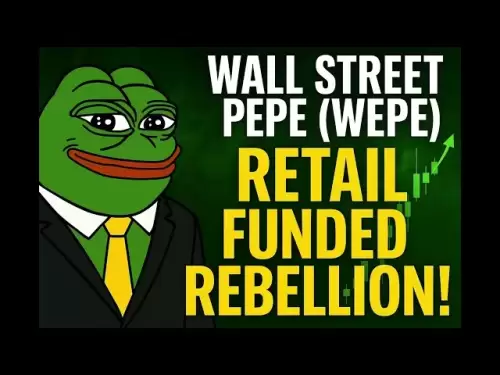-
 Bitcoin
Bitcoin $119800
1.38% -
 Ethereum
Ethereum $3873
3.25% -
 XRP
XRP $3.247
1.85% -
 Tether USDt
Tether USDt $1.001
0.02% -
 BNB
BNB $840.4
5.94% -
 Solana
Solana $190.0
2.55% -
 USDC
USDC $1.000
0.03% -
 Dogecoin
Dogecoin $0.2433
2.69% -
 TRON
TRON $0.3197
-0.05% -
 Cardano
Cardano $0.8367
1.39% -
 Sui
Sui $4.327
3.11% -
 Hyperliquid
Hyperliquid $44.00
0.31% -
 Stellar
Stellar $0.4461
1.76% -
 Chainlink
Chainlink $19.25
4.61% -
 Hedera
Hedera $0.2941
3.90% -
 Bitcoin Cash
Bitcoin Cash $598.4
6.89% -
 Avalanche
Avalanche $26.19
4.67% -
 Litecoin
Litecoin $115.1
0.50% -
 Shiba Inu
Shiba Inu $0.00001427
1.55% -
 Toncoin
Toncoin $3.379
2.01% -
 UNUS SED LEO
UNUS SED LEO $8.966
-0.16% -
 Ethena USDe
Ethena USDe $1.001
0.02% -
 Uniswap
Uniswap $11.04
4.16% -
 Polkadot
Polkadot $4.239
2.00% -
 Monero
Monero $324.6
0.36% -
 Bitget Token
Bitget Token $4.672
2.46% -
 Pepe
Pepe $0.00001294
2.69% -
 Dai
Dai $0.0000
0.01% -
 Cronos
Cronos $0.1443
2.71% -
 Aave
Aave $302.9
1.98%
What is the future development trend of USDT?
USDT's future hinges on navigating tighter regulations, competing with rival stablecoins, embracing technological advancements like DeFi integration, and decisively addressing transparency concerns regarding its reserves.
Feb 28, 2025 at 01:49 am
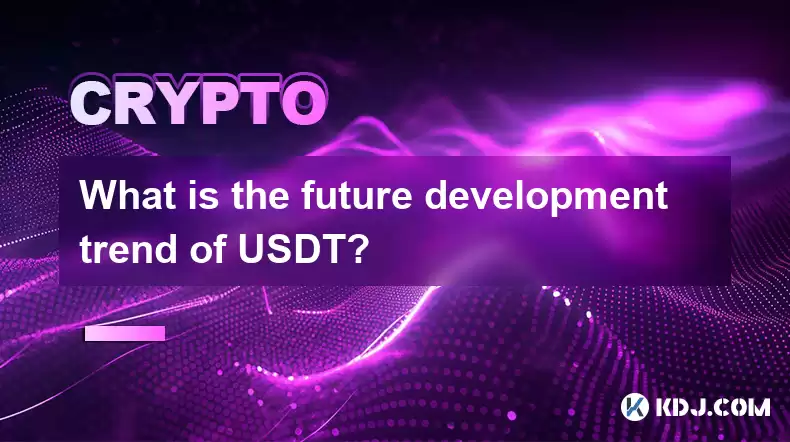
What is the future development trend of USDT?
Key Points:
- Regulatory Scrutiny and Compliance: The increasing regulatory pressure on stablecoins globally will significantly shape USDT's future. This includes navigating evolving KYC/AML (Know Your Customer/Anti-Money Laundering) regulations, reserve transparency requirements, and potential licensing frameworks. Failure to adapt could severely impact its adoption and market share.
- Competition from other Stablecoins: The stablecoin market is becoming increasingly crowded. USDT faces competition from other stablecoins like USDC, BUSD, and DAI, each with its own strengths and weaknesses. Maintaining its dominance will require continuous innovation and addressing user concerns regarding transparency and security.
- Technological Advancements: The integration of new technologies, such as blockchain scaling solutions and decentralized finance (DeFi) protocols, will be crucial for USDT's future. Improving transaction speeds, reducing fees, and expanding functionalities within the DeFi ecosystem are essential to remain competitive.
- Reserve Transparency and Audits: Building and maintaining trust is paramount. Greater transparency regarding USDT's reserves and more frequent, rigorous audits are crucial to alleviate concerns about its backing and stability. A lack of transparency can lead to decreased user confidence and potential de-pegging events.
- Adoption and Integration: Wider adoption by exchanges, payment processors, and merchants is crucial for long-term growth. Increased integration into mainstream financial systems and applications will determine USDT's relevance and usability in the broader economy.
- Regulatory Scrutiny and Compliance:
The future of USDT is inextricably linked to the evolving regulatory landscape surrounding stablecoins. Governments worldwide are increasingly scrutinizing stablecoins due to concerns about their potential impact on financial stability, money laundering, and market manipulation. USDT, being the largest stablecoin by market capitalization, is naturally under intense scrutiny. This regulatory pressure manifests in several ways:
- KYC/AML Compliance: Regulations requiring exchanges and other financial institutions to verify the identities of their users (KYC) and monitor transactions for suspicious activity (AML) are becoming increasingly stringent. USDT's issuer, Tether, must ensure full compliance with these regulations across all jurisdictions where it operates. Failure to comply could lead to significant fines, operational restrictions, or even outright bans. The complexity of navigating diverse and evolving regulations across different jurisdictions presents a significant challenge for Tether, requiring substantial investment in compliance infrastructure and legal expertise. This includes constant updates to their internal systems and processes to reflect the latest regulatory changes and best practices. Furthermore, they need to ensure their partners and intermediaries also maintain rigorous compliance standards.
- Reserve Transparency: Concerns about the composition and adequacy of USDT's reserves have consistently been a major point of contention. Regulations demanding greater transparency regarding the assets backing USDT are gaining traction. This means Tether needs to provide more detailed and verifiable information about its reserves, including the types of assets held, their valuation methods, and regular independent audits. The level of transparency required will likely increase in the future, potentially requiring real-time disclosure of reserve information. This presents a significant technical and operational challenge, as it necessitates developing and implementing robust systems for data management, auditing, and public reporting. Any perceived lack of transparency can easily trigger a loss of confidence, leading to a run on the stablecoin and potential de-pegging.
- Licensing and Frameworks: Some jurisdictions are considering establishing specific licensing frameworks for stablecoins, requiring issuers to obtain licenses before operating within their borders. This adds another layer of complexity to USDT's operations, requiring significant effort to understand and comply with diverse licensing requirements. Obtaining licenses can be a time-consuming and expensive process, requiring extensive documentation, legal review, and ongoing compliance monitoring. The future may see a patchwork of different regulatory regimes across various countries, creating a complex and challenging environment for USDT to navigate. The cost of compliance could significantly impact profitability, potentially requiring adjustments to their business model.
- Competition from other Stablecoins:
The stablecoin market is far from monolithic. USDT faces stiff competition from a growing number of alternative stablecoins, each with its own strengths and weaknesses. Maintaining its market dominance requires a proactive approach to innovation and addressing user concerns.
- USDC: Circle's USDC is a major competitor, often cited for its higher level of transparency and regulatory compliance. USDC has actively sought regulatory approvals and partnerships with financial institutions, positioning itself as a more regulated and institutionally-friendly option. This makes it a strong competitor, particularly for institutional investors and businesses seeking greater regulatory certainty. USDT needs to match or exceed USDC's transparency efforts to retain its market share.
- BUSD: Binance USD (BUSD) benefits from the vast network and user base of the Binance exchange. This gives it a significant advantage in terms of liquidity and trading volume. Its close association with a major cryptocurrency exchange provides it with a powerful distribution channel, making it a formidable competitor. USDT needs to leverage its existing network and explore new partnerships to counter BUSD's reach.
- DAI: MakerDAO's DAI is a decentralized stablecoin, offering a different approach based on collateralized debt positions (CDPs). While DAI’s decentralized nature offers certain advantages in terms of censorship resistance, it also presents challenges in terms of stability and scalability. USDT's centralized nature, while attracting regulatory scrutiny, also offers benefits in terms of stability and ease of use. USDT needs to continuously improve its scalability and efficiency to compete with the growing adoption of decentralized stablecoins.
- Other emerging stablecoins: The stablecoin landscape is constantly evolving, with new projects emerging regularly. These newcomers may offer innovative features or focus on specific niches, potentially attracting users away from USDT. USDT needs to remain vigilant and adapt to the changing market dynamics, potentially incorporating new technologies and features to remain competitive. This requires continuous innovation and a proactive approach to staying ahead of the competition.
- Technological Advancements:
The integration of new technologies will play a crucial role in shaping USDT's future. Improvements in transaction speeds, reduced fees, and enhanced functionalities are essential for maintaining competitiveness in a rapidly evolving market.
- Blockchain Scaling Solutions: The current limitations of blockchain technology, such as slow transaction speeds and high fees, can hinder the adoption of stablecoins. The integration of scaling solutions like Layer-2 networks can significantly improve USDT's performance, making it more efficient and cost-effective for users. This is crucial for competing with faster and cheaper payment systems. Exploring and implementing various scaling solutions, such as Lightning Network or Plasma, will be essential for USDT's future.
- Decentralized Finance (DeFi) Integration: The growing DeFi ecosystem offers numerous opportunities for stablecoins to expand their functionalities. Integrating USDT into various DeFi protocols allows users to participate in lending, borrowing, yield farming, and other DeFi activities. This enhances USDT's utility and expands its potential use cases. However, this requires careful consideration of security risks and potential vulnerabilities within the DeFi ecosystem. Strategic partnerships with reputable DeFi protocols and robust security measures are crucial for successful integration.
- Interoperability: The ability to seamlessly transfer USDT across different blockchains is essential for wider adoption. Improving interoperability allows for greater flexibility and accessibility, expanding the potential user base. Implementing cross-chain solutions and exploring protocols that enable interoperability will be vital for USDT's long-term success. This requires collaboration with other blockchain networks and the development of compatible protocols.
- Reserve Transparency and Audits:
Maintaining user trust is crucial for the long-term success of any stablecoin. Increased transparency regarding USDT's reserves and more frequent, independent audits are essential to address concerns about its stability and backing.
- Composition of Reserves: The exact composition of USDT's reserves has been a source of controversy. Greater transparency regarding the types of assets held, their valuation methods, and the proportion of each asset type is essential to build trust. This may involve publishing regular reports detailing the reserve composition and providing verifiable evidence of asset ownership. Independent audits by reputable firms can help verify the accuracy of these reports and ensure the reserves are sufficient to maintain the peg.
- Frequency and Rigor of Audits: More frequent and rigorous audits by independent accounting firms are crucial to build and maintain confidence in USDT's stability. These audits should not only verify the quantity of reserves but also assess their quality and liquidity. Regularly publishing audit reports publicly demonstrates a commitment to transparency and accountability. The frequency and scope of these audits should be increased to address concerns and build trust.
- Third-Party Verification: Incorporating third-party verification mechanisms can enhance the credibility of USDT's reserve information. This could involve using blockchain technology to create a transparent and verifiable record of the reserves or partnering with independent custodians to hold and manage the reserves. This adds an extra layer of assurance and provides independent verification of the reserve information.
- Adoption and Integration:
Wider adoption by exchanges, payment processors, and merchants is crucial for USDT's long-term growth. Increased integration into mainstream financial systems and applications will determine its relevance and usability in the broader economy.
- Exchange Listings: Maintaining listings on major cryptocurrency exchanges is essential for liquidity and trading volume. Collaborating with exchanges to ensure smooth and reliable trading of USDT is crucial for its accessibility. Maintaining a strong relationship with key exchanges and expanding listings on new platforms are essential for market reach.
- Payment Processor Integration: Integrating USDT into payment processing systems allows for seamless transactions in various contexts. Partnerships with payment processors enable users to make payments using USDT, expanding its usability beyond the cryptocurrency sphere. This requires collaboration with payment processors and adapting USDT to integrate with existing payment systems.
- Merchant Adoption: Encouraging merchants to accept USDT as a form of payment expands its real-world utility. This requires creating incentives for merchants to adopt USDT and addressing potential concerns about volatility and transaction fees. Educational initiatives and marketing campaigns can help promote the benefits of accepting USDT as a payment method.
- Integration with Mainstream Financial Systems: The integration of USDT into mainstream financial systems, such as banking systems, is a crucial step towards wider adoption. This involves navigating regulatory hurdles and establishing partnerships with financial institutions. This is a long-term goal that requires significant effort and collaboration with regulators and financial institutions.
FAQs:
Q: Is USDT truly backed 1:1 with the US dollar?
A: Tether claims a 1:1 backing for USDT, but this has been a subject of ongoing debate and scrutiny. While they publish regular attestations, independent verification and complete transparency regarding the composition and management of their reserves remain points of contention. The exact nature and liquidity of their reserves are key factors determining the stability of the peg.
Q: What are the risks associated with investing in USDT?
A: Investing in USDT carries several risks, including: counterparty risk (the risk that Tether may be unable to meet its obligations), regulatory risk (the risk of changing regulations impacting USDT's operations), and operational risk (the risk of technical failures or security breaches). The lack of complete transparency surrounding the reserves also presents a significant risk factor.
Q: How does USDT compare to other stablecoins?
A: USDT is the largest stablecoin by market capitalization, but it faces competition from other stablecoins like USDC, BUSD, and DAI. Each stablecoin has its own strengths and weaknesses concerning transparency, regulation, and technological features. The choice of which stablecoin to use depends on individual risk tolerance and priorities.
Q: What is the future of stablecoins in general?
A: The future of stablecoins is uncertain but likely intertwined with regulatory developments. Increased regulatory scrutiny and the development of new technologies will shape the landscape. The competition between different stablecoins will drive innovation and potentially lead to the emergence of new, more efficient and transparent stablecoin solutions. The level of adoption by mainstream financial institutions will be a key factor determining their long-term success.
Q: What role will technology play in the future of USDT?
A: Technology will be crucial for USDT's future development. Improvements in blockchain scaling, integration with DeFi protocols, and enhanced interoperability will be essential for improving efficiency, reducing costs, and expanding its use cases. The adoption of new technologies will be vital for remaining competitive in a rapidly evolving market.
Disclaimer:info@kdj.com
The information provided is not trading advice. kdj.com does not assume any responsibility for any investments made based on the information provided in this article. Cryptocurrencies are highly volatile and it is highly recommended that you invest with caution after thorough research!
If you believe that the content used on this website infringes your copyright, please contact us immediately (info@kdj.com) and we will delete it promptly.
- Tether Gold's Meteoric Rise: Market Cap and Soaring Gold Demand
- 2025-07-28 10:30:11
- Reddit, Crypto, and Altcoins: Navigating the Hype in 2025
- 2025-07-28 10:30:11
- Bitcoin, Altcoin, Volume Surge: Decoding the Crypto Market's Latest Moves
- 2025-07-28 10:50:20
- Bitcoin, Altcoins, and 2024 Targets: A NYC Perspective
- 2025-07-28 10:50:21
- Moo Deng Meme-Coin Mania: ROI or Just Hype?
- 2025-07-28 10:55:13
- Ethereum, Injective, and Tokenized Stock: A New Era in DeFi?
- 2025-07-28 11:10:12
Related knowledge
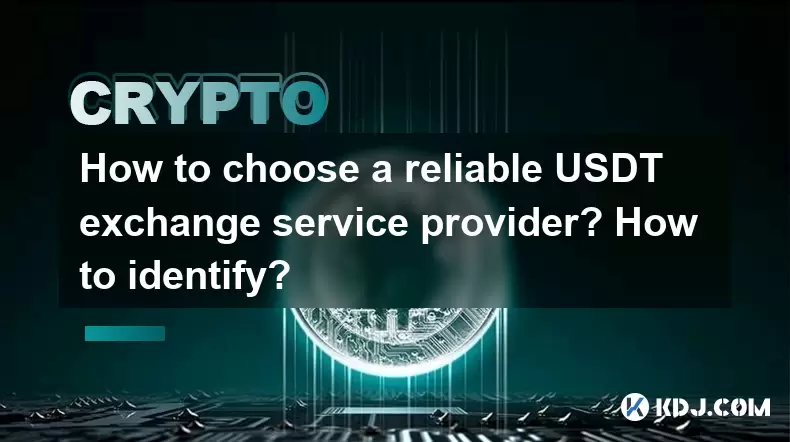
How to choose a reliable USDT exchange service provider? How to identify?
Jun 12,2025 at 03:15pm
Understanding the Role of USDT in Cryptocurrency TradingUSDT (Tether) is one of the most widely used stablecoins in the cryptocurrency market. It is d...
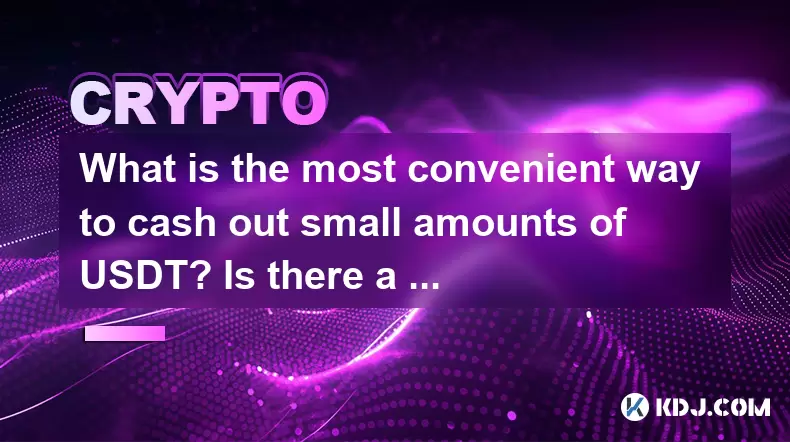
What is the most convenient way to cash out small amounts of USDT? Is there a shortcut?
Jun 11,2025 at 11:00pm
Understanding the Need to Cash Out Small USDT AmountsCashing out small amounts of USDT can be a challenge for many crypto users. Traditional methods o...
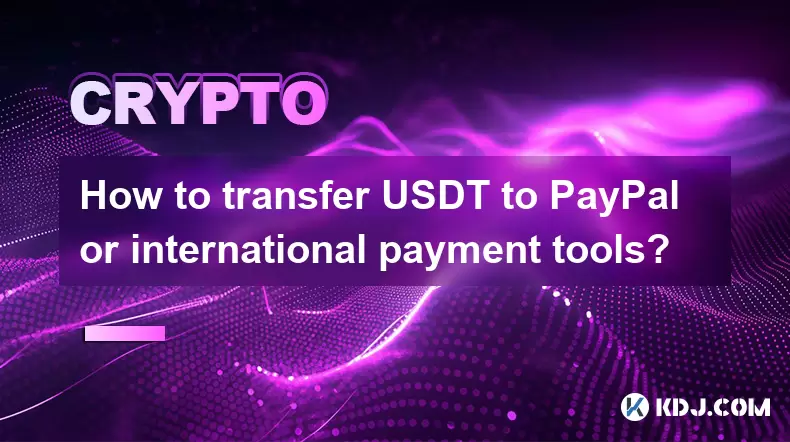
How to transfer USDT to PayPal or international payment tools?
Jun 15,2025 at 05:28am
Understanding the Basics of USDT and PayPal IntegrationUSDT (Tether) is a stablecoin pegged to the US dollar, offering blockchain-based value transfer...
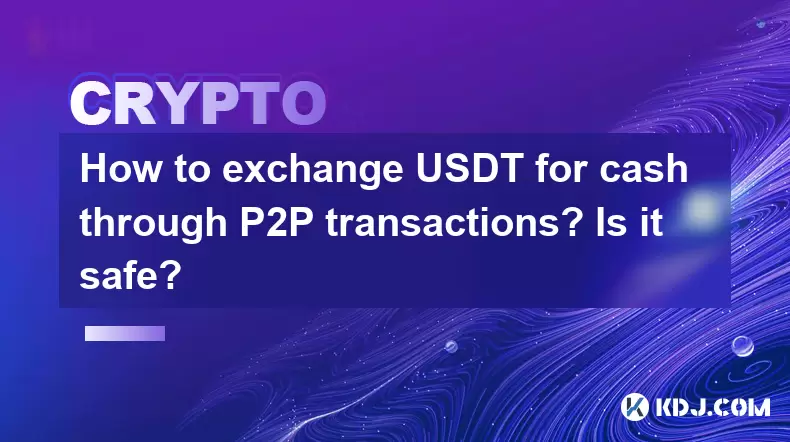
How to exchange USDT for cash through P2P transactions? Is it safe?
Jun 18,2025 at 07:56am
Understanding USDT and P2P TransactionsTether (USDT) is a stablecoin pegged to the value of the US dollar, making it a popular choice for users who wa...
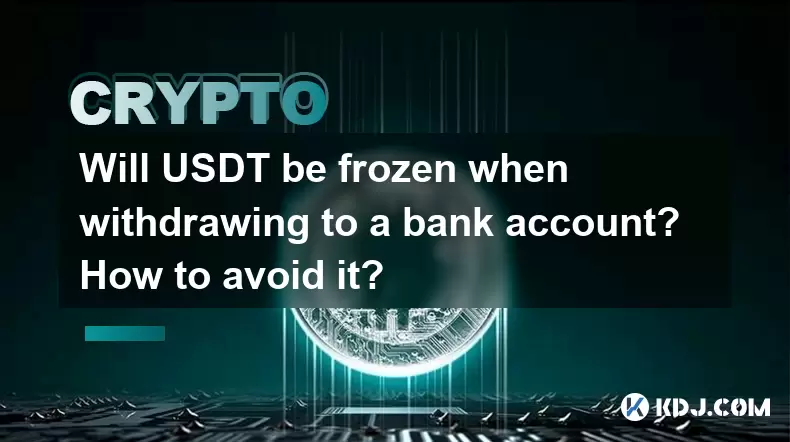
Will USDT be frozen when withdrawing to a bank account? How to avoid it?
Jun 15,2025 at 10:03am
Understanding USDT Withdrawals and Bank Account Freezing RisksWhen users decide to withdraw USDT (Tether) to a bank account, one of the most common co...
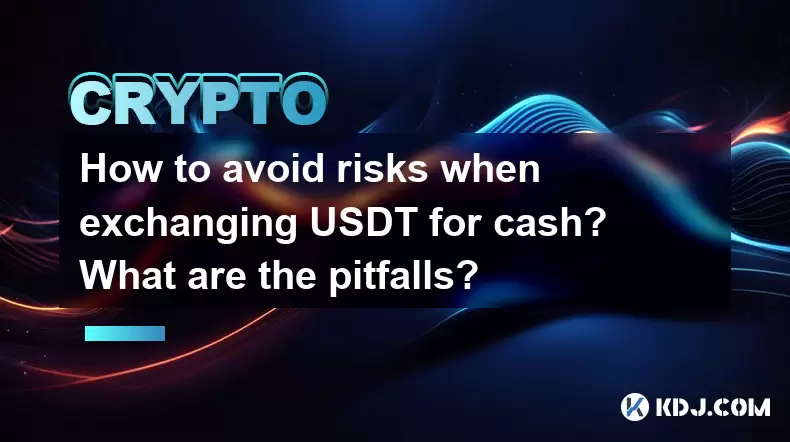
How to avoid risks when exchanging USDT for cash? What are the pitfalls?
Jun 11,2025 at 08:14pm
Understanding the Risks of Exchanging USDT for CashWhen exchanging USDT (Tether) for cash, users must be aware of the potential risks involved. As a s...

How to choose a reliable USDT exchange service provider? How to identify?
Jun 12,2025 at 03:15pm
Understanding the Role of USDT in Cryptocurrency TradingUSDT (Tether) is one of the most widely used stablecoins in the cryptocurrency market. It is d...

What is the most convenient way to cash out small amounts of USDT? Is there a shortcut?
Jun 11,2025 at 11:00pm
Understanding the Need to Cash Out Small USDT AmountsCashing out small amounts of USDT can be a challenge for many crypto users. Traditional methods o...

How to transfer USDT to PayPal or international payment tools?
Jun 15,2025 at 05:28am
Understanding the Basics of USDT and PayPal IntegrationUSDT (Tether) is a stablecoin pegged to the US dollar, offering blockchain-based value transfer...

How to exchange USDT for cash through P2P transactions? Is it safe?
Jun 18,2025 at 07:56am
Understanding USDT and P2P TransactionsTether (USDT) is a stablecoin pegged to the value of the US dollar, making it a popular choice for users who wa...

Will USDT be frozen when withdrawing to a bank account? How to avoid it?
Jun 15,2025 at 10:03am
Understanding USDT Withdrawals and Bank Account Freezing RisksWhen users decide to withdraw USDT (Tether) to a bank account, one of the most common co...

How to avoid risks when exchanging USDT for cash? What are the pitfalls?
Jun 11,2025 at 08:14pm
Understanding the Risks of Exchanging USDT for CashWhen exchanging USDT (Tether) for cash, users must be aware of the potential risks involved. As a s...
See all articles























